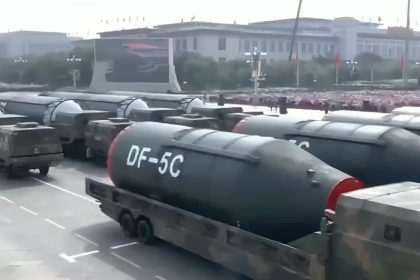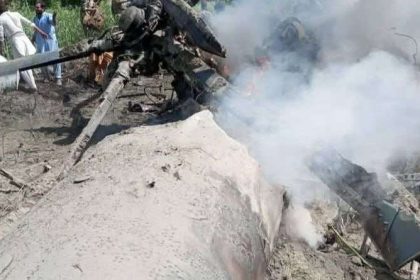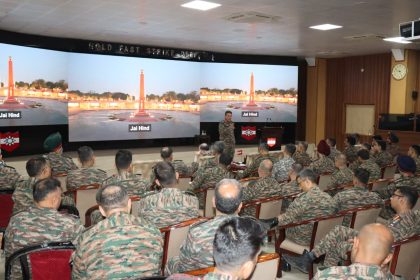China Unveils DF-5C Strategic Nuclear Missile With Global Strike Range at V-Day Parade
Beijing showcases DF-5C ICBM with global strike range and MIRV capability at V-Day parade.
Cheaper Russian Oil, More S-400 Missiles for India Likely Amid Trump Tariffs: Report
Discounted Russian crude and advanced missile systems highlight deepening Moscow-New Delhi ties amid US pressure.
Kolkata Police Stops Army Truck After Near Miss With Commissioner’s Convoy
Army Truck–Police Convoy Clash Sparks Tensions in Kolkata.
5 Killed as Pakistan Army Helicopter Crashes in PoK
Technical Fault Blamed for Gilgit-Baltistan Crash, All Five Onboard Dead.
Higher Command Course Trains Officers in Desert Warfare at Jodhpur’s Konark Corps
From Operation Sindoor to Sir Creek: Future Military Leaders Study India’s Western Frontiers.
India Issues NOTAM for Air Force Exercise Near Pakistan’s Airspace
IAF’s Arabian Sea Drill and India–US Yudh Abhyas in Alaska Showcase Dual Focus on Homeland Security and Global Partnerships.






